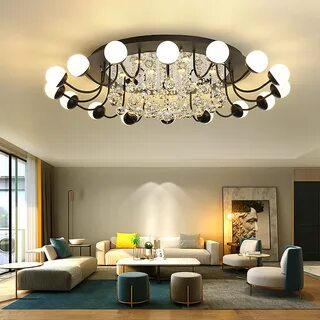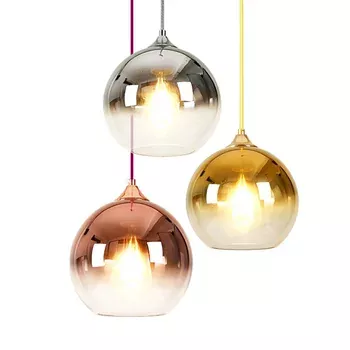
What is the basis of the LED lighting?
To fully understand LEDs and their design, you must first understand LEDs.
If you do, then you’ll know the way LEDs emit light. Let’s look at the following!
1.What is LED?
LED is an abbreviationof English light emitting diode. This is the term used to describe light-emitting dime in Chinese. It is made up of compounds that contain gallium (Ga) in addition to as nitrogen, phosphorus and arsenic.
2.Structure of LED lights
The central part of the light-emitting diode a wafer compos-ed of p-type semiconductor and n-type semiconductor. There is a transition layer between the p-type semiconductor and the n-type semiconductor, known as a p-n junction. As you can see in the photo below, it mainly consists of five elements: bracket, silver glue chip, gold wire, and epoxy resin.
3.LED lighting principle
When a current flows through the chip electrons in the N-type semiconductor as well as the holes in the P-type semiconductor violently collide and recombine in the light-emitting layer to create photons that emit energy as photons (that is the light we see).
4. Colorful LED lighting principle
If you’d like to learn the fundamentals of bright LED light-emitting then first we need to know the three major colors of red (R), green (G) and blue (B).
These three colors can be blended to create other colors. For example, when red light and green light are lit simultaneously the green and red lights are mixed into yellow.
When two LEDs are illuminated it can create the colors of cyan, purple and yellow.
A circuit that emits seven distinct colors is possible to create with the circuit that lights up green, red and blue LEDs together and three main LEDs at once.
The hues produced by this phenomenon are dependent on the proportions by which they are superimposed.
What is the difference between expensive LED lights versus cheap LED lights?
There are many categories of LED lights. They can be separated into two categories.
The first is a type of light source, which includes street lights and spotlights. They are employed to light up the area.
Lanterns are another type of decoration and lighting. They are lamps with special shapes, chandeliers, floor lamps etc.
Lamps that are decorative or finished, the difference between the expensive and low-cost lamps is a breeze to grasp.
They are, for instance, all chandeliers, one is K9 crystal chandelier, the other is standard and the rest are pieces of rubber, glass, etc.
The materials differ, and the price is different. It’s the same thing, so I won’t discuss the specifics.
This question probably wasn’t asked by the poster. We’ll talk about the LED light’s primary illumination sources and power supply this morning.
Let’s start by talking about the lamp beads
Roughly speaking, if you want to explain it in depth, LED is a solid-statesemiconductor chip that converts electrical energy to light energy.
The chip is made up of two parts One with a P-type and the other having an N-type. When a current flows through the wafer electrons of the N type semiconductor will be pushed towards the P-type semiconductor.
When electrons of the N-type semiconductor meet the semiconductor electrons of P-type, Energy will be emitt-ed by photons, which is the principle of LED lights.
The material that creates the P-N junction determines wavelength of light.
The core of the LED light sourceis the crystal/chip which emits the LED light.
After the chip has been manufactured using epitaxy, grinding, evaporation as well as other manufacturing processes, the amount of P-N electrons in the chip, the scratches on the P-N electrode and so on.
The luminosity of the chip is dependent on the speed of the conversion of electricity into lighting. Some chips have a higher conversion rate and are brighter in comparison to others. conversion rate, also known as bare-crystal brightness.
Additionally, every chip comes with an attenuation factor that indicates the change in efficiency when converting electrical energy into light energy within some time.
The more durable it is the better. The theoretical life of the chip may exceed 100,000 hours.
After the chip production has been completed, there is packaging. Essentially the LED chip is transformed into lamp beads, which everybody is able to see in everyday LED lamps.
Packaging is designed to shield LED chips while letting in maximum light and dissipating heat energy from light emission.
There are currently pin-type flip-chip and positive-type processes COB-type central packaging, power-type packaging, etc.
The final cost of LEDs can vary based on the package.
A second, similar packaging design will come with different final controls for heat dissipation, stability and cost.
Let’s talk about power supply
LED power supply (also called driving power supply) has a single function that is to supply LED lamp beads that operate at a constant current and voltage.
If the operating voltage of the LED is higher than the or the voltage is unstable, the LED will quickly age and be damaged.
LED is a great energy-saving product that consumes very little power.
The typical working voltage is only a few volts. Some lamps that exceed tens of volts are special-purpose lamps.
The current is usually measured in milliamps. Wiring is connected directly to the mains power of 220V.
It’s first passed through the power supply that drives it before the voltage is rectified and stabilized before being sent to the LED lamp.
The two types are isolate and non-isolate. After reduction of the voltage, non-isolated power supply connects directly to the light source.
Isolated power supply refers to the fact that both output and input are isolated via a transformer.
The process involves switching magnetic energy into electrical, and then back to electrical. It’s more secure than a non-isolated power supply.
The energy supply is high and the price is higher.
Also, verify if the power supply for LED drives have functional guarantees, including protection against short circuits in addition to surge and power-off protection. The cost of a lamp is also influenced by this element.

